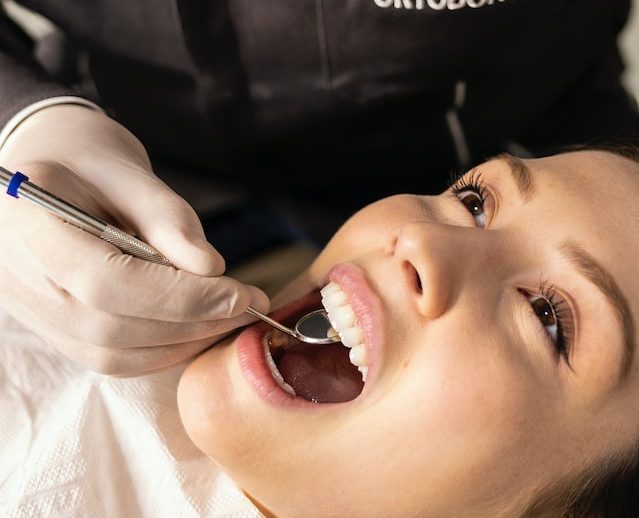Sudden Bleeding After Tooth Extraction: When to Worry

Sudden Bleeding After Tooth Extraction: When to Worry
Tooth extraction is a common oral surgery procedure where a tooth is removed due to decay, damage, or overcrowding. While some bleeding is normal after a tooth extraction, excessive or prolonged bleeding can be alarming. In this comprehensive guide, we’ll explore when to be concerned about sudden bleeding after a tooth extraction, what steps to take if it occurs, and how to prevent it.
Understanding Sudden Bleeding After Tooth Extraction
Sudden bleeding after a tooth extraction occurs when the blood vessels in the extraction site fail to close properly, leading to continued bleeding. This bleeding might appear as a steady trickle or be more excessive and gushing. Understanding the difference between normal and concerning bleeding is crucial for proper post-extraction care.
When Should You Be Worried About Bleeding?
It’s normal to experience some bleeding immediately after a tooth extraction. However, if the bleeding persists for more than an hour after the procedure, it could indicate a problem that requires medical attention. Here are some key indicators that the bleeding might be more serious:
- Persistent Bleeding: If bleeding continues beyond an hour and shows no signs of slowing down, it’s a cause for concern.
- Heavy Bleeding: Bleeding that is heavy and doesn’t reduce even with applied pressure.
- Additional Symptoms: Accompanying symptoms like severe pain, swelling, or fever can also be indicators of a complication.
What to Do When Experiencing Heavy Bleeding?
If you experience heavy bleeding after a tooth extraction, follow these steps to manage the situation:
Step 1: Apply Pressure
Pressure Application: Use a clean gauze pad or cotton swab and apply pressure to the extraction site. Hold this pressure for at least 15-20 minutes. This helps in clot formation and can reduce bleeding.
Step 2: Use Ice Packs and Pain Medications
Ice Packs: Apply an ice pack to the outside of your cheek near the extraction site. This can help reduce swelling and constrict blood vessels to minimize bleeding.
Pain Medications: Over-the-counter pain medications like ibuprofen can help reduce pain and inflammation. Avoid aspirin as it can thin the blood and worsen bleeding.
Step 3: Rinse With Warm Salt Water
Saltwater Rinse: Mix one teaspoon of salt with 8 ounces of warm water. Rinse your mouth gently for about one minute. Saltwater can help reduce inflammation, decrease bacteria, and promote healing.
Step 4: Seek Medical Attention
Medical Attention: If bleeding persists despite following the above steps, seek immediate medical attention from a dentist or doctor. They may provide treatments such as stitches, antibiotics, or other medications to control bleeding and prevent infection.
Preventing Bleeding After a Tooth Extraction
Preventive measures can significantly reduce the risk of excessive bleeding after a tooth extraction. Here are some tips to help you manage post-extraction care effectively:
Take Care at Home
Rest and Avoid Strenuous Activities: Refrain from engaging in strenuous activities or exercises that may put pressure on the extraction site. Resting helps your body heal and reduces the risk of disrupting the blood clot.
Avoid Touching the Area: Do not touch or poke the extraction site with your tongue or fingers. Disrupting the area can dislodge the clot and lead to further bleeding.
Watch Your Diet
Avoid Certain Foods: For the first few days after the extraction, avoid hard, crunchy, or chewy foods such as nuts, chips, and hard candies. These can put pressure on the extraction site and cause bleeding.
Opt for Soft Foods: Stick to a diet of soft foods like yogurt, mashed potatoes, and smoothies. These foods are easier to eat and less likely to disturb the extraction site.
Follow Medication Instructions
Medications: Follow the medication instructions provided by your dentist or doctor. This may include taking prescribed antibiotics to prevent infection and other medications to manage pain and inflammation.
Stay Hydrated
Hydration: Drink plenty of water to stay hydrated, but avoid using straws. The suction created by straws can dislodge the blood clot and lead to more bleeding.
Avoid Smoking and Alcohol
No Smoking or Alcohol: Smoking and alcohol can interfere with the healing process. Avoid these for at least 24-48 hours after the extraction to promote faster healing.
When to Follow Up with Your Dentist
Even if the bleeding subsides, it’s essential to follow up with your dentist for a post-extraction check-up. This ensures that the extraction site is healing correctly and helps identify any potential complications early.
Regular Check-ups: Schedule a follow-up appointment with your dentist as recommended. Regular check-ups help monitor the healing process and address any concerns promptly.
Sudden bleeding after tooth extraction can be worrisome, but understanding how to manage it effectively can make a significant difference. If bleeding persists for more than an hour, it’s crucial to seek medical attention and follow prescribed treatment and prevention steps. By taking proper care and following your dentist’s instructions, you can ensure a smooth and healthy recovery after a tooth extraction.




